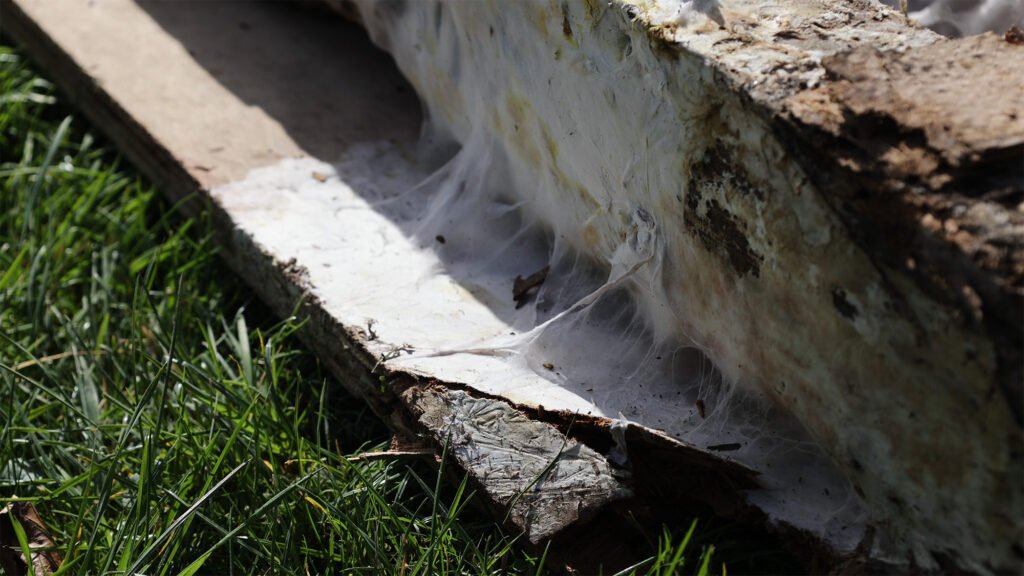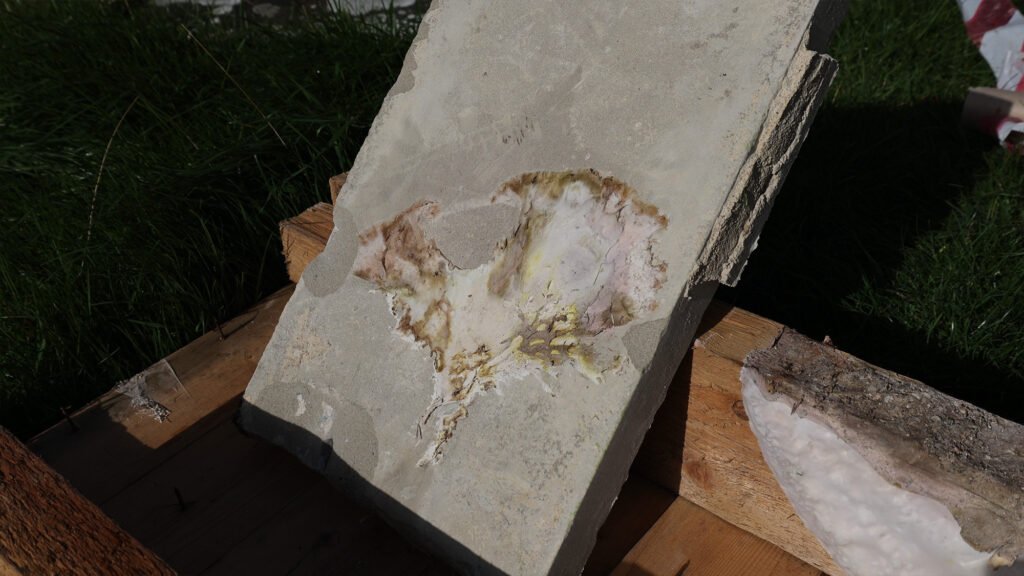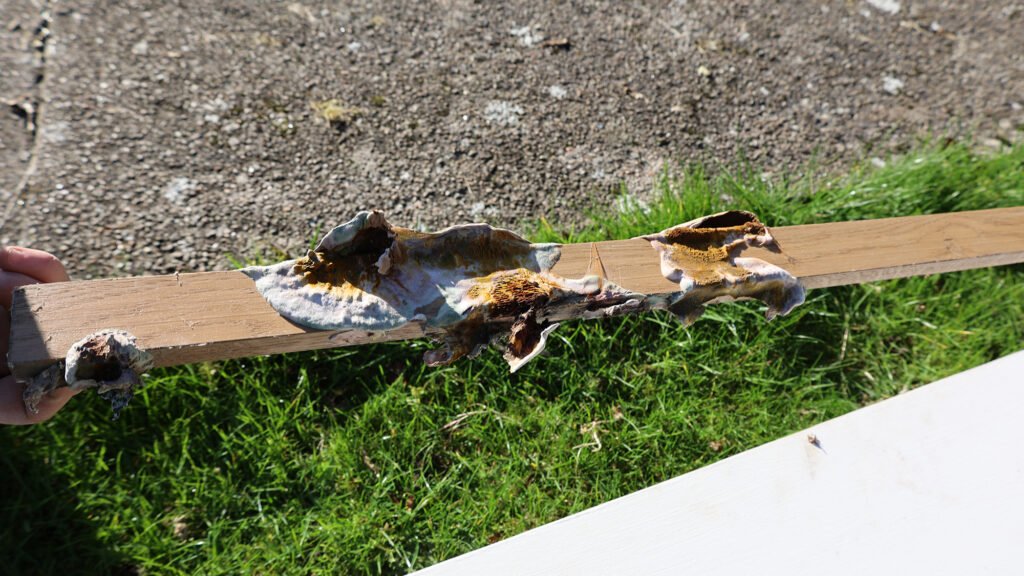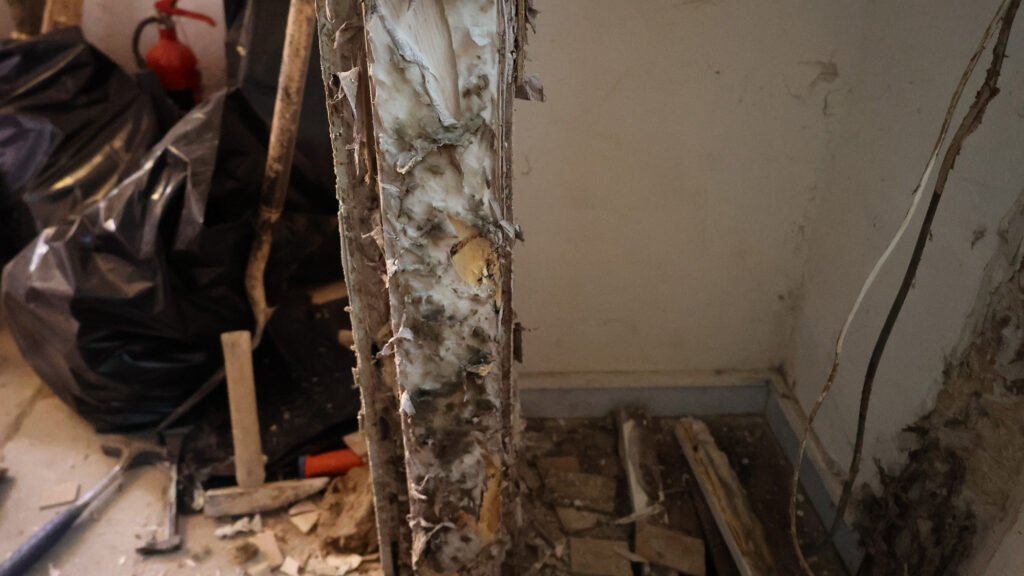What is Dry Rot?

In short: Dry Rot is a living, growing fungus that loves damp conditions and timber. If you have wood in your house, it needs to be sufficiently ventilated to prevent growth.
What Does Dry Rot Look Like?
It starts with spores invisible to the human eye. They are everywhere and constantly on the lookup for favourable conditions. These conditions are moist, damp wood, in which they can germinate and thrive.


Once they’ve found their new home, it produces something called Hyphae. Hyphae is a white substance with a fluffy, cotton wool appearance. While looking somewhat harmless, this is the fungus extracting sugar from the timber. Weird to think that wood has sugar in it, but it does, and it is crucial to the structure of the timber. Without it, the entire integrity begins to weaken and the wood becomes unable to support any weight.
The roots, known as mycelium, can travel through bricks and mortar, so dry rot is not limited just to timber. While it cannot weaken stone, it can live on there undisturbed and use brickwork/stonework as travel routes to other pieces of timber. Essentially, all the stonework becomes masonry motorways to more delicious wood sugar.
The most recognisable thing about Dry Rot is a dense brown patch which looks like it’s been toasted. This is a cluster of spores, a living fungal organism. This is called, unsettlingly, the sporophore, and is completely self-replicating. The sporophore is basically a launchpad for all the spores to start their journey again for more suitable nearby surfaces. It continues to sap the moisture from wood, drying, shrinking, and weakening it.

How Did We Find It?
We found an infestation of Dry Rot in a church we were working on in North Yorkshire. Some routine restoration works to strengthen some rotten woodwork revealed a large amount of dry rot. There was an accessible bathroom at the back of the nave which was very poorly ventilated, and many years of damp, humid and airless conditions was a treasure trove for dry rot.
What Are The Health Risks Of Dry Rot?
Our restoration operatives used industry facemasks to remove the affected timber from the building. In many cases, it is not detrimental to health, but mould spores can be a health issue for people with breathing difficulties, pre-existing health problems, or allergies – possibly unknown ones. Always best to play it safe if you’re on a site removing it by equipping a mask.

How Do We Fix It?
Dry rot is incredibly difficult to fix forever. As mentioned, the spores are everywhere, just on the lookout for their next timber hotel. But if detected early, it becomes easier to remedy. The solution is for specialists to remove all the timber from the structure.
Following the removal of wood, the area can be rebuilt and ventilation issues fixed at this point. Preventing the fungus from having somewhere to grow is the best remedy. Of course, the absolute best remedy is in the preventative stage. Reducing moisture is the key, so fixing leaks, avoiding humid build-ups, and ensuring there’s no rainwater finding its way in.
To keep up to date with all our projects, come find us on Facebook or YouTube